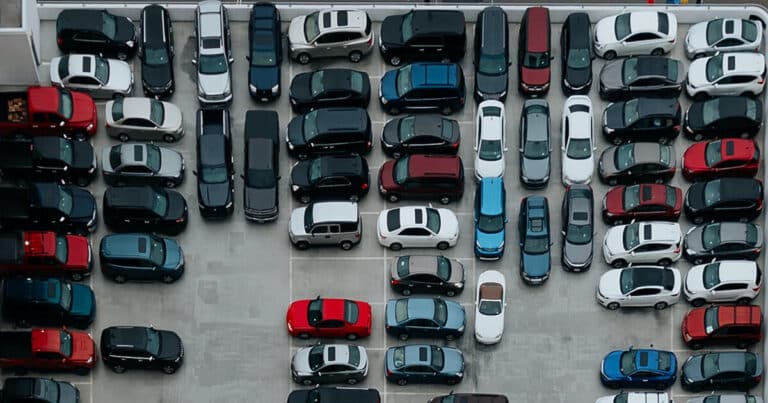By Yonatan Neril, ICSD Director
Cars are on a collision course with trees. Why is that? Because cars need parking spaces. Most cars use multiple parking spaces throughout the day — at home, work, the supermarket, movie theater, and elsewhere. This means every new car that’s on the road requires building more parking spaces all across a city.
In the video below, I witnessed a tractor and concrete truck pouring concrete to build a new retaining wall in order to create new parking spaces. As Joni Mitchell sang in 1970, ‘they paved paradise and put up a parking lot.’ Almost 50 years later, her words resonate even more.
One of the first things that God did in creating the world was to plant a forest. That was the Garden of Eden. As Genesis 2:15-16 states, “God took the human being and placed him in the garden of Eden, to serve it and conserve it. And God commanded the human being, saying, “Of every tree of the garden you are free to eat…” According to Jewish teaching, since God planted a forest, we should emulate God and also plant forests.
So what’s the link between cars and trees? Between 2010 and 2035, humanity will likely DOUBLE the number of personal automobiles on the road, from one billion to two billion cars. One billion new cars may mean a billion new parking spaces. Since many of these parking spaces will be built on forested land, this could mean a billion less trees. (Some parking spaces will require cutting several trees, and some will be built on treeless land.)
A New York Times article notes that the U.S. has up to two billion parking spaces. It cites a study that estimates that the U.S. has eight parking spots for every car in the country. 14% of the land in Los Angeles is devoted to parking infrastructure. An MIT News article about the work of Professor Eran Ben-Joseph (who wrote (Rethinking a Lot: The Design and Culture of Parking) notes, “Moreover, the economics of parking lot construction means that surface parking lots, where the whole lot is on ground level, occupy a large footprint because they are relatively cheap to build — four times less expensive than parking garages and six to eight times less expensive than underground parking lots.”

From an ecological perspective, trees and concrete do opposite things. Trees absorb rainwater through their roots. Concrete drains rainfall to culverts, where it drains to oceans. Trees provide shade and habitat. Concrete absorbs the sun’s heat, heat up cities, and covers natural habitat from sprouting life.
At this moment in 2018, we need to have some pause and think about whether the personal automobile is appropriate for planet earth. Humanity will likely reach 11 billion people by the end of this century. Can the earth sustain so many people driving so many cars that are currently powered by so much fossil fuel? Even if there is space on earth for so much new pavement, should we make more concrete at the expense of trees?
Dr. Seuss, in his book The Lorax written nearly 50 years ago, understood the plight of the trees at the hands of industrial society. He wrote, “I am the Lorax. I speak for the trees. I speak for the trees, for the trees have no tongues. And I’m telling you please, at the top of my lungs” that we need to protect the trees.

If you do not take inspiration from children’s books, the Bible also provides some key insights in this regard. “The human being is a tree of the field” (Deuteronomy 20:19), which is understood by Jewish sages to mean that the fate of the human being depends on the trees. Trees give us clean air. They help retain the soil and prevent landslides. They create ecosystems for plants and animals. That is a key reason why we need to tread very carefully when it comes to cutting down trees, especially on the mass scale that a billion new cars will require.
Think about trees before you buy a car. With fewer cars, parking lots can become parks.
How else can we protect trees? Here’s a few things all of us can do:
- Buy 100% recycled paper.
- Print only double sided.
- Print only when needed.
- Minimize online shopping that requires cardboard boxes.
- Plant trees.
- Pick up waste while on forest hikes.
*Featured image source





